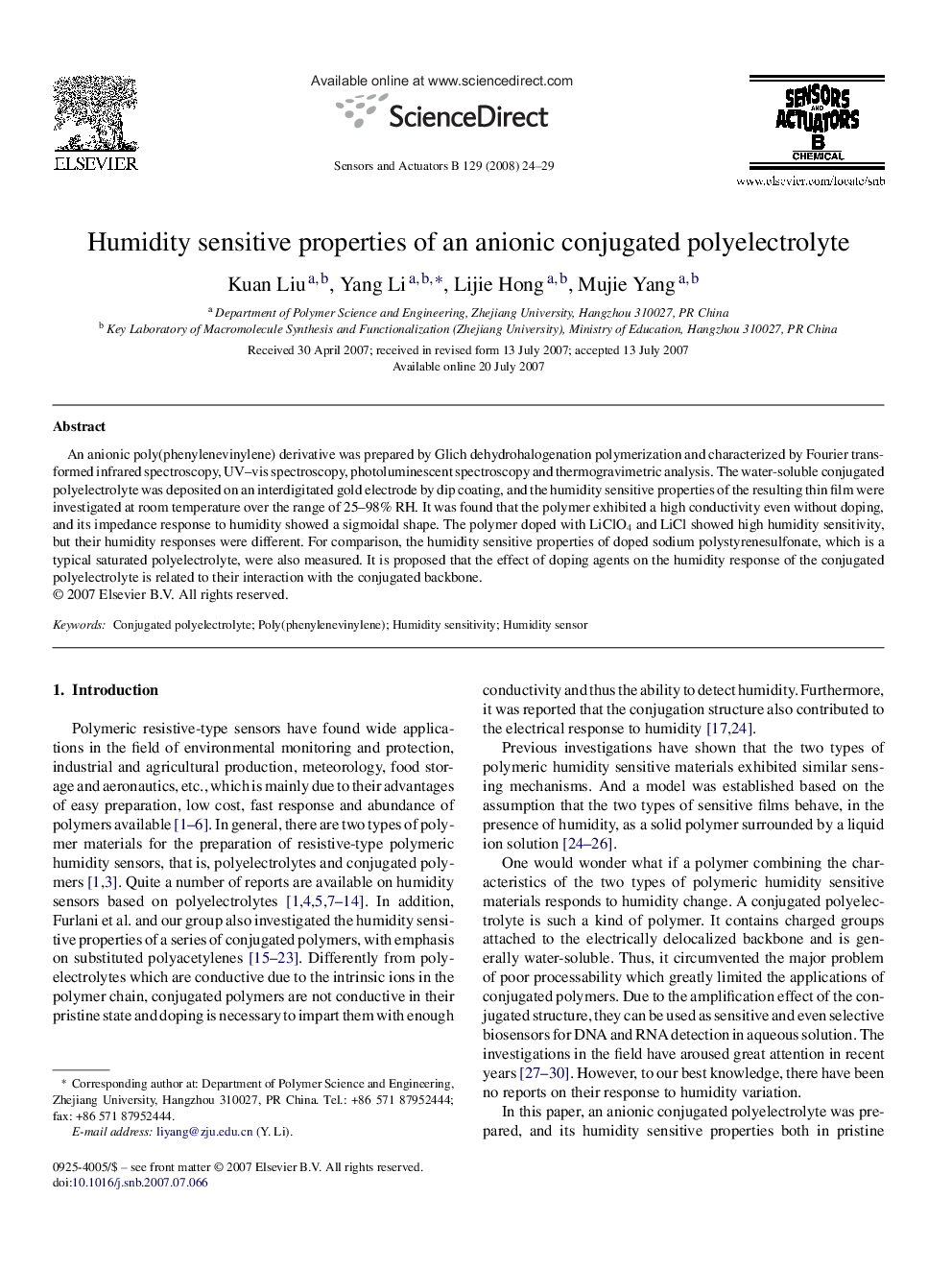| Article ID | Journal | Published Year | Pages | File Type |
|---|---|---|---|---|
| 741484 | Sensors and Actuators B: Chemical | 2008 | 6 Pages |
An anionic poly(phenylenevinylene) derivative was prepared by Glich dehydrohalogenation polymerization and characterized by Fourier transformed infrared spectroscopy, UV–vis spectroscopy, photoluminescent spectroscopy and thermogravimetric analysis. The water-soluble conjugated polyelectrolyte was deposited on an interdigitated gold electrode by dip coating, and the humidity sensitive properties of the resulting thin film were investigated at room temperature over the range of 25–98% RH. It was found that the polymer exhibited a high conductivity even without doping, and its impedance response to humidity showed a sigmoidal shape. The polymer doped with LiClO4 and LiCl showed high humidity sensitivity, but their humidity responses were different. For comparison, the humidity sensitive properties of doped sodium polystyrenesulfonate, which is a typical saturated polyelectrolyte, were also measured. It is proposed that the effect of doping agents on the humidity response of the conjugated polyelectrolyte is related to their interaction with the conjugated backbone.
